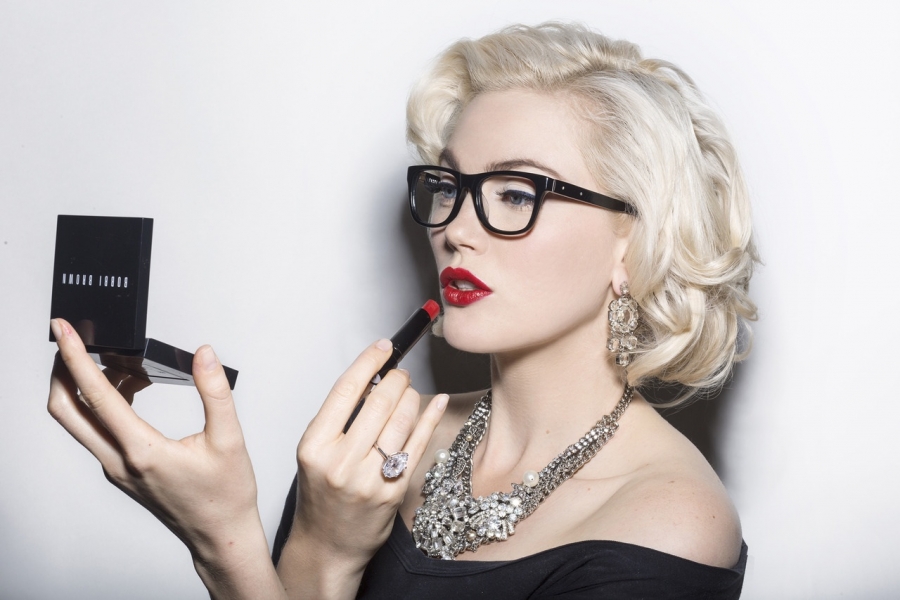|
Iceland on film: a road trip around the 'Hollywood of the north'
Posted on: 03/10/14
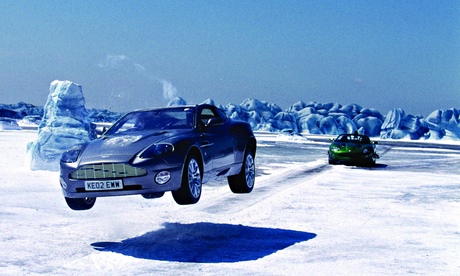 Another Day. Photograph: Snap Stills/Rex. Click on the magnifying glass to see Iceland's dramatic landscape The sun has yet to rise but the morning light is already illuminating the reasons why Iceland is renowned for its landscape. I'm standing on a helipad in the south-eastern town of Höfn: with its harbour behind me, I can see snow-covered mountains separated by four icy tongues, each part of the enormous Vatnajökull glacier. A few lights glow yellow-orange in windows but the main colours are sky blue, a sliver of pink around the clouds and the dark-brown mass of mountains yet to reveal their rugged detail. I'm not waiting for a helicopter; this just seemed like a good place to take in the view … sort of. The wind speed is more than 40mph – that's an eight (fresh gale) according to Mr Beaufort's scale – and, as I frame a photograph, the wind inflates the hood of my parka and personal lift-off feels imminent. Despite the conditions, the drama of this view makes it easy to understand why Iceland has, in recent years, become almost as popular with filmmakers as it is with tourists. And I'm here to explore the locations that have tempted Hollywood producers. Drawn by epic vistas and tax breaks that let producers recoup 20% of costs, recent movies shot in the country include The Secret Life of Walter Mitty, Prometheus, Oblivion, and Thor: The Dark World. Later this year, audiences will see Iceland in Darren Aronofsky's biblical drama Noah (UK release 4 April) and Interstellar, the hotly anticipated sci-fi adventure from Batman director Christopher Nolan. There's the small screen, too, most notably in the highly successful swords-and-skullduggery TV series Game of Thrones. 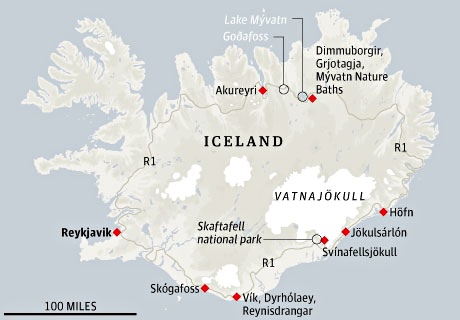 Today I'm planning a road trip from Höfn to the scenic coastal town of Vík, via the glacial lagoon of Jökulsárlón. The drive is along Iceland's ring road, also known as Route 1, which celebrates its 40th birthday this year. In the absence of any rail network, this 832-mile circuit is the only way too see the entire country, providing access to its cities and towns, as well as its natural wonders. Driving west, I pass spots that stand in for Afghanistan and the Himalayas in Walter Mitty. Film-makers often want Iceland for its otherworldly qualities, or remoteness, but the Ben Stiller-directed film delivers a first, for Hollywood, in making Iceland integral to the story (rather than, say, a role as a rocky alien planet). The views are staggering – volcanoes, black sands, glaciers and coast stimulate the senses almost to the point of overwhelming them. I pull over several times, grabbing a camera. The idea of film-makers doing the same thing pops into my head and I assume they must pull emergency stops every few minutes, and shout: "We must film here!" Because of this it takes me longer than planned to reach the blue-coloured icebergs floating on Jökulsárlón. With its crystal-clear ice fragments along the shore and mountains in the background, this place is a favourite with film-makers; its most famous on-screen moment being the car chase on ice in the Bond film Die Another Day. The vista is made even more impressive by the "behind the scenes" stories I hear from Thor Kjartansson, a location manger for Truenorth, one of the production services companies that helps get film crews where they need to be. Two days earlier I had met Thor at Reykjavik's Grillmarkaðurinn. Over dinner at this stylish, unstuffy restaurant, he told me how engineers dammed the lake at the point it meets the sea, to help freeze it for the ambitious Bond shoot and, despite the ingenuity, how close the chase came to being moved to Alaska. The lake didn't freeze to a safe depth for filming until just days before shooting. However, it's the theme of Iceland's accessibility that matters most to Thor. "We can get crews to remote places like we did in Oblivion," he says. "But a lot of the other locations are just off Route 1. There are also plenty of activities you can do while you're there. You can pick up a snowmobile tour that takes in the waterfall of Skógafoss or go glacial hiking and there are boat tours at Jökulsárlón." Back in the car, I continue along the ring road, but, as this is a film-based article, let's have a flashback to yesterday … I'm sheltering in Halldorskaffi, a café-restaurant in Vík. A tasty sandwich of local lamb, fries and a Diet Coke (£13) are helping me feel a little better about the drive from Reykjavik. Mist and rain meant the journey was less than spectacular. The murk is now so bad I almost miss the fact that I'm driving alongside Eyjafjallajökull, the volcano whose eruption paralysed international airspace in 2010. Fortunately, the gloom lifts to ensure that a visit to Skógafoss, seen in Thor: The Dark World, delivers enough awe to keep me outside in the rain and spray. Then it's on to Dyrhólaey, Iceland's most southerly point, less than four miles from the Route 1 turn off. Under a narrow cliff stands a 115m-high arch of black rock, big enough for a boat to pass through. And, as far as Darren Aronofsky is concerned, that boat could be an ark: Noah's. His "flood epic", starring Russell Crowe, features Dyrhólaey, and the nearby sea stacks of Reynisdrangar, which can be seen off the coast. That is, if you can see any of it, and I'm struggling to. The irony of the weather, turning more biblical by the minute, is not lost on me. The big reveal here is that I'm doing a drive that takes five hours without stops and on both driving days the light only lasts from 10am-4pm. I'm still two hours from Höfn when it gets dark. The rain turns torrential and the wind that will provide comedic overtones tomorrow whips up and pushes insistently at the car. I hog the middle of the road. There is almost no traffic and no lights, just reflectors on roadside poles, and I am on my own. I make it to Hotel Höfn, but my fingernails have created indentations on the steering wheel. Over salt cod with ratatouille and a baked potato (£20), followed by a you've-earned-this treat of chocolate brownie and vanilla ice cream (£8.80), my nerves untangle. With the storm preventing further exploration, I chat to the hotel's co-owner, Gísli Mar Vilhjálmsson. We talk about how Hollywood arrivals have boosted business, as most shoots are outside high season. The prospect of accommodating them during summer has him shaking his head, though. He says "his" stretch of Iceland (Skaftafell to Hvalnes, roughly 100 miles) has only 800 rooms – "maybe a maximum of 1,600 beds" – and that's in the context of the Icelandic population of 320,000 plus 600,000 visitors a year. Gísli also has a warning: maybe the storm will stick around tomorrow. This could affect my plans. He tells me to keep checking a website that's essential for drivers in Iceland. This gives updates (between 7am and 10pm) on road conditions. But morning comes and the storm has subsided enough to give me a view of the mountains from the helipad and to ensure I'll get back for my flight … cue wibbly-wobbly dissolve to the present. The flight to Akureyri, in the north of Iceland, takes half an hour. It's snowing when I land and this town – Iceland's second "city" – looks beautiful and welcoming, with its mix of hotels, hostels, late-night coffee shops, bars and restaurants. I check in at Hotel Nordurland – Scandi-style minimalism and a dash of home comforts – and get a recommendation for dinner. Rub23, just off the town's main street, offers a tasty twist on sushi, using local seafood. I also venture across the road to Brugghúsbarinn, a bar that sells beers from local microbrewery Kaldi. As snow flutters past the window, my notebook says tomorrow is time to go "beyond the wall" on a day-long tour of Game of Thrones filming locations. At 9am, Jon Thor Benediktsson from The Traveling (sic) Viking is waiting. It is still dark but his minibus is warmed up and ready to visit the land of the "free folk" at Lake Mývatn. The drive there takes us on a captivating incline with views of mountains and craters and then to the spectacular Goðafoss (waterfall of the gods), a location you'll see in the show's fourth season. Goðafoss is linked to Iceland's conversion to Christianity in 999AD and, while that stuff is legend, the reality is a powerful waterfall evoking a sense of wonder. Jon was a guide to the crew on Game of Thrones and he picks out specific locations around the lake. He also has an iPad and is able to play video clips while you're parked; one is of a passageway between rocks where the "spearwife" Ygritte is seen taking Jon Snow's sword. Later, we drive to Grjótagjá, a cave with a thermal spring inside. This was used for an intimate scene between Ygritte and Jon Snow. He doesn't show that clip, although he does take me to the geothermal pools at Mývatn Nature Baths for a dip. As I relax in the hot water, I think about the benefits to Iceland of increased tourism, and how the rise in numbers will mean change. The Icelandic government has a 2020 policy which includes details about the development of tourism and creating the infrastructure to cope with it. Promoting winter tourism is on the agenda because it looks like the best way to spread the number of visitors. Many are positive about the prospects for extending the season and believe there are enough attractions to draw people all year round. Of course, it would be tempting to see this in a mercenary sense – Iceland's financial troubles, and the frustrations connected to the ash cloud, are not in a distant past. But it seems implausible to suggest that any country would limit its tourist season, especially when it has such natural attributes and diversity. For anyone who has enjoyed the movies and TV series shot in Iceland, the chance to visit these dramatic, natural film sets is an unmissable experience. And, even if you're not a fan of the productions made here, the fact that Hollywood investment is helping draw attention to such beautiful yet accessible locations is something to be grateful for.
COMMENTS
Be the first to post a comment! Post A Comment:

|
.gif)


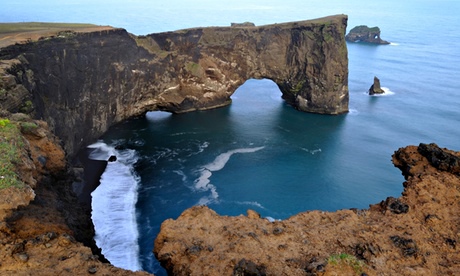
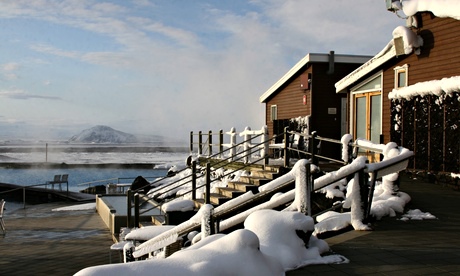
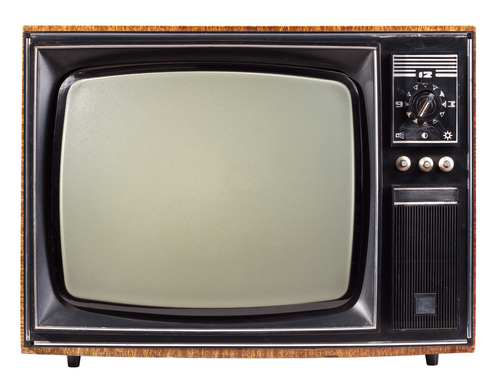
.jpg)

